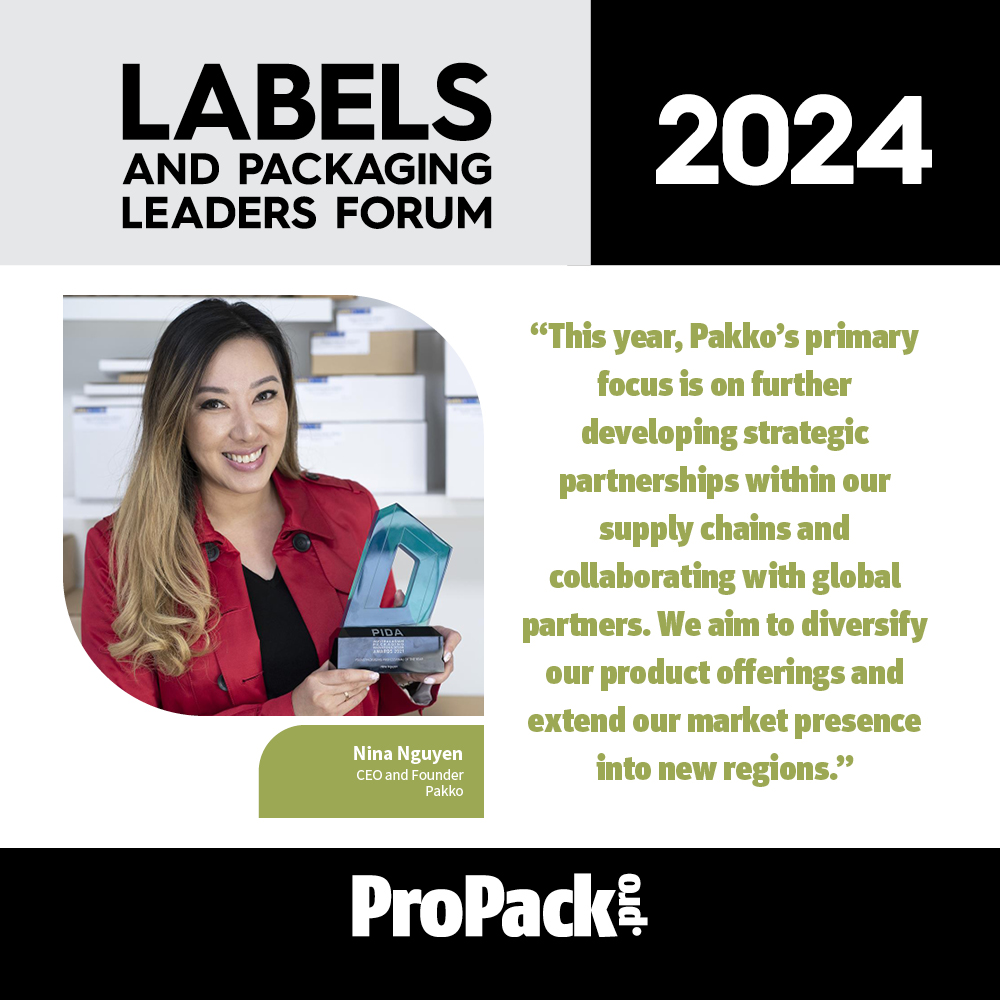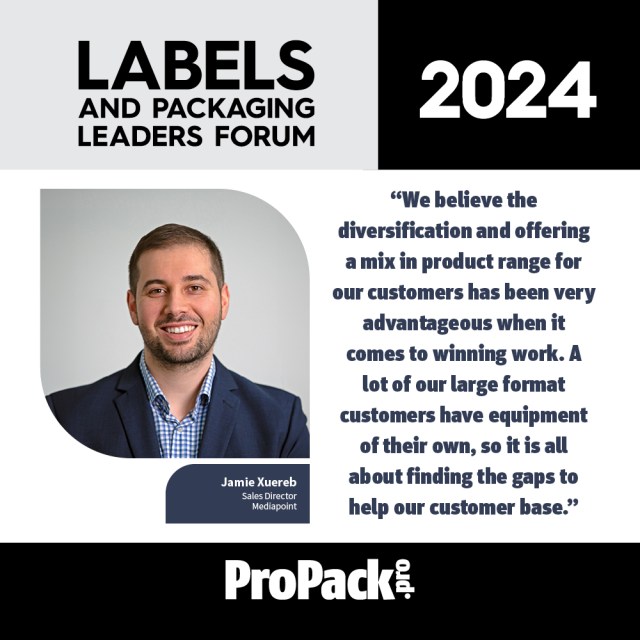
The labels and packaging industry in Australia experienced remarkable growth in 2023, mainly driven by technological advancements, a notable shift towards digital production, increased automation, and a heightened focus on sustainable practices.
However, the industry also faced significant challenges, including skilled labour shortages, inflation, and evolving customer demands. These challenges prompted many business leaders to revise their strategies, focusing on operational efficiency and sustainability.
Sustainability emerged as a key topic throughout 2023, many businesses adopted practices aimed at reducing waste, using energy efficiently, and optimising resource allocation. What I also noticed was a trend towards businesses reshoring to local production, as cost and timelines were becoming a concern. Despite these challenges, I think the industry demonstrated remarkable resilience and adaptability in a dynamic market environment.
Looking back at 2023 we focused heavily on our technology piece combining efficiency, innovation, and sustainability, aiming to reshape the packaging industry. We introduced a new tool called the “ES” (Estimating System), enabling customers to quickly receive quotes directly through our website in 30 seconds, delivered to their email inbox. We also developed our own chatbot, “Vira,” designed in-house to deeply understand all aspects of Pakko’s operations and processes.
One of the most interesting trends in 2023 was the significant shift towards sustainability. It wasn’t just about using eco-friendly materials it was also the approach to implementing sustainable practices. For us, we saw the rapid adoption of biodegradable packaging and recyclable materials. What made this interesting was how fast it scaled and the adoption of it across all industry/ sectors, not just labels and packaging.
Based on the trends and developments in 2023, my key predictions for 2024 are:
- Continued growth in digital production: A shift towards digital production is likely to continue. There will need to be flexibility in design and productions and the ability to quickly adapt to market changes and consumer demands.
- Increased automation: Enhancing operational efficiency, reducing manual errors, and shortening production timelines.
- Sustainability: Companies will likely innovate further in developing environmentally friendly packaging solutions, such as biodegradable materials and processes that minimise waste and energy consumption.
- Reshoring of production: There might be an increased trend towards local production or reshoring, as companies seek to mitigate supply chain risks
- Challenges in skilled labour: This could lead to increased investment in training and development, as well as the exploration of new technologies to offset labour shortages.
- Technology advancement: In areas like digital printing, smart packaging and sustainable materials.
This year, Pakko’s primary focus is on further developing strategic partnerships within our supply chains and collaborating with global partners. We aim to diversify our product offerings and extend our market presence into new regions. We’re also going to keep improving our technology, like trying out new methods and tools. This includes looking into areas such as smart packaging that uses IoT technology and packaging specifically for online businesses. We’re also using data analysis to better understand what’s happening in the market and what our customers want to create new products and how to market them.
This year, we’ll also be promoting a lot on our advancements in technology and efficiency. I’ll be highlighting our ability to deliver packaging solutions faster and more cost-effectively, an essential aspect in the face of rising inflation and increased cost-consciousness among businesses. Our commitment to sustainable, eco-friendly packaging will also be a key part of our messaging.
In terms of industry challenges for 2024, I believe the industry could face:
- Supply chain vulnerabilities: The industry could face supply chain disruptions, which can affect the availability of raw materials and lead to increased costs. This includes the risks associated with global logistics and dependence on specific suppliers or regions.
- Cost pressures and economic fluctuations: Fluctuations in the economy, such as inflation or recession, can impact consumer spending and thus affect the demand for packaging solutions.
- Competition and market saturation: Intense competition, both locally and globally, can pressure margins and market share. Innovating and differentiating products in a saturated market can be challenging.
To foster growth and improvement in the next 12 months, I believe the labels and packaging industry should focus on several key strategies:
- Embrace digital transformation: Continuously invest in and adopt digital technologies for production. This includes digital printing, automation of workflows, and integration of software solutions for design and manufacturing. Digital transformation can increase efficiency and allow for greater customisation and flexibility in production.
- Innovate in sustainable practices: Given the increasing consumer and regulatory emphasis on sustainability, the industry should focus on developing and using environmentally friendly materials, such as biodegradable or recyclable packaging.
- Focus on customer-centric innovation: Stay attuned to changing customer needs and preferences. This includes offering personalised and customisable packaging options and being responsive to feedback and market demands.
- Build strategic partnerships: Collaborate with technology providers, material suppliers, and other stakeholders to drive innovation and efficiency in the industry.
Nina Nguyen is founder and CEO of Pakko
This article was first published in the 2024 February edition of ProPack.pro magazine.
Read the original article here
Comment below to have your say on this story.
If you have a news story or tip-off, get in touch at editorial@propack.pro
Sign up to the ProPack newsletter


